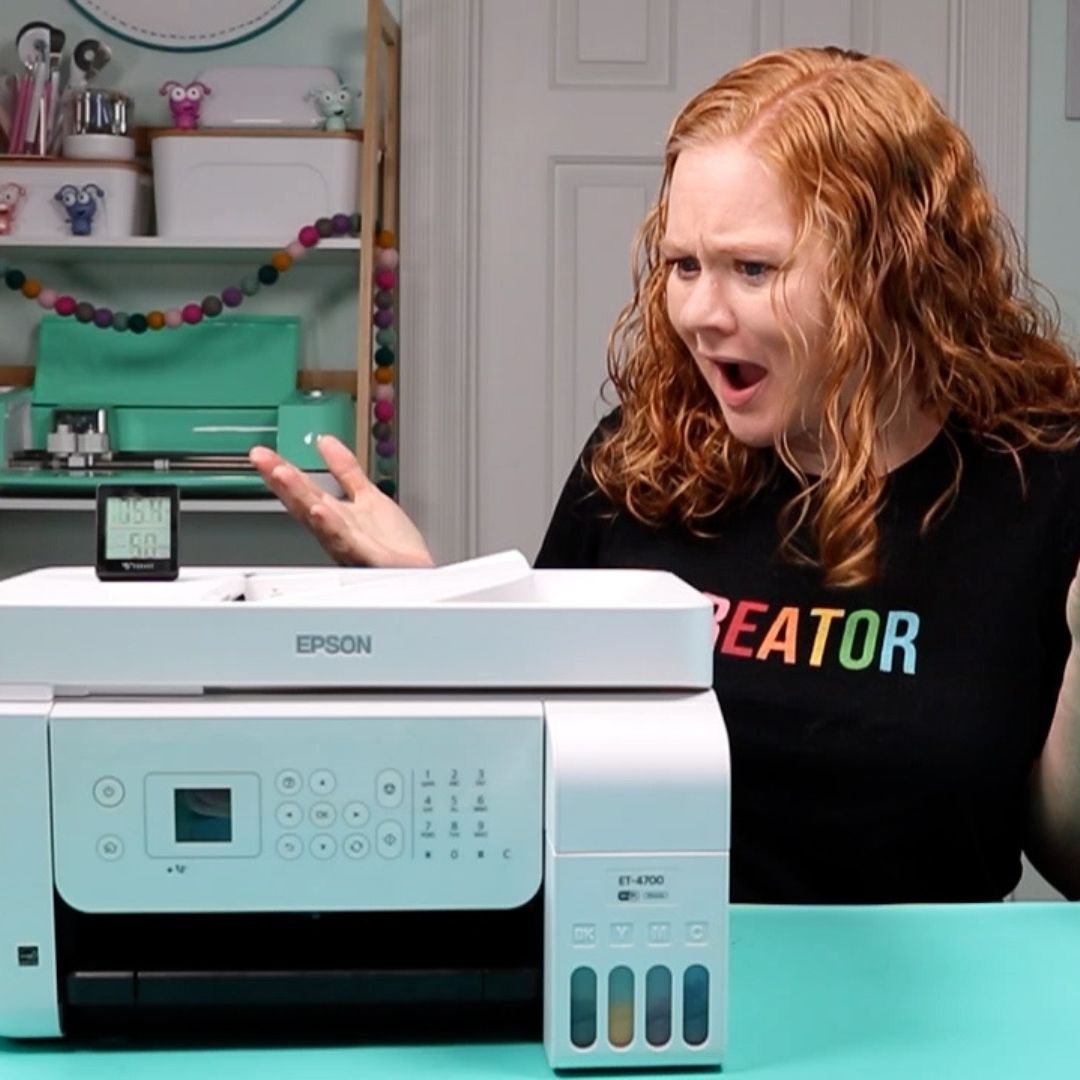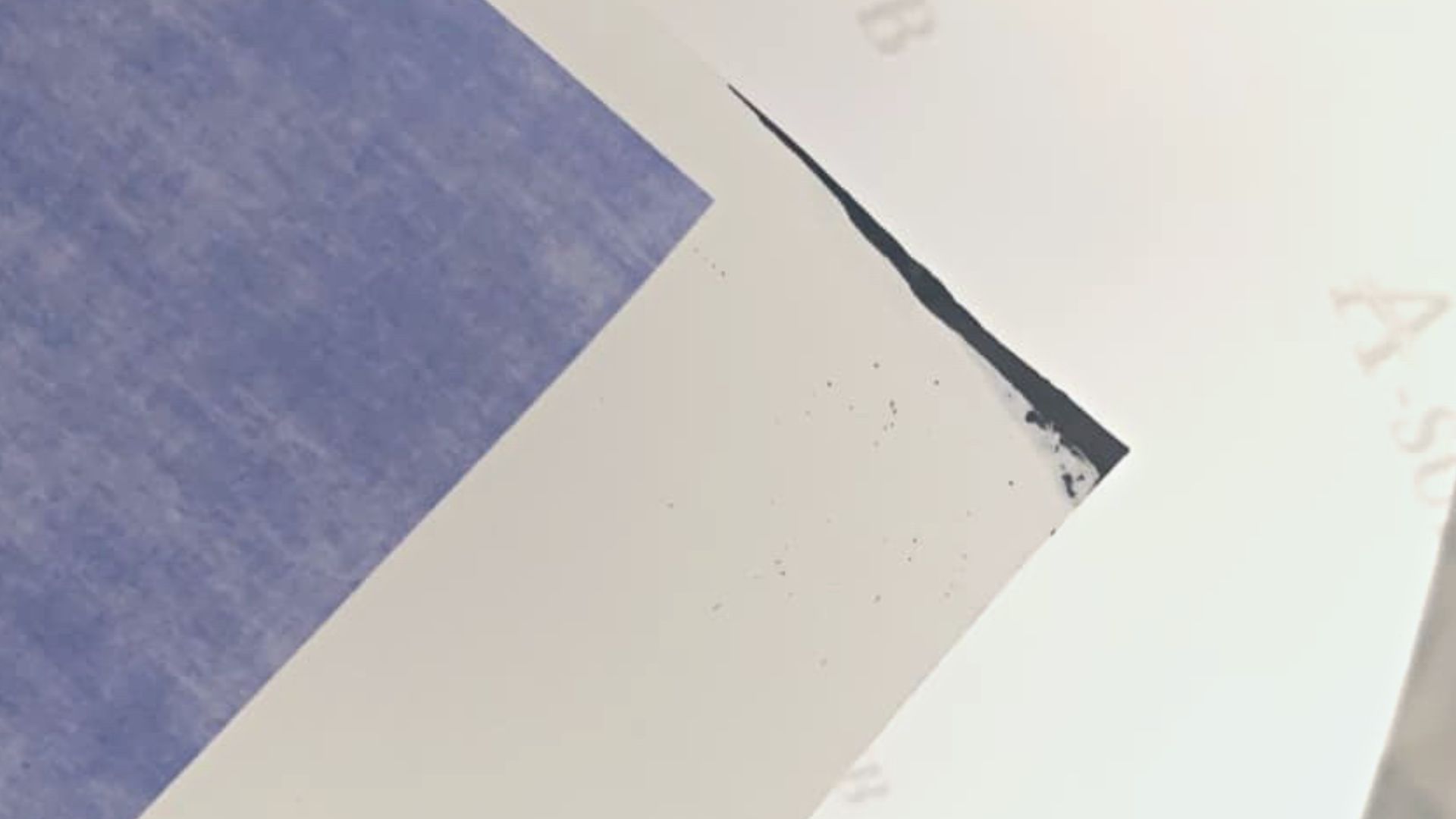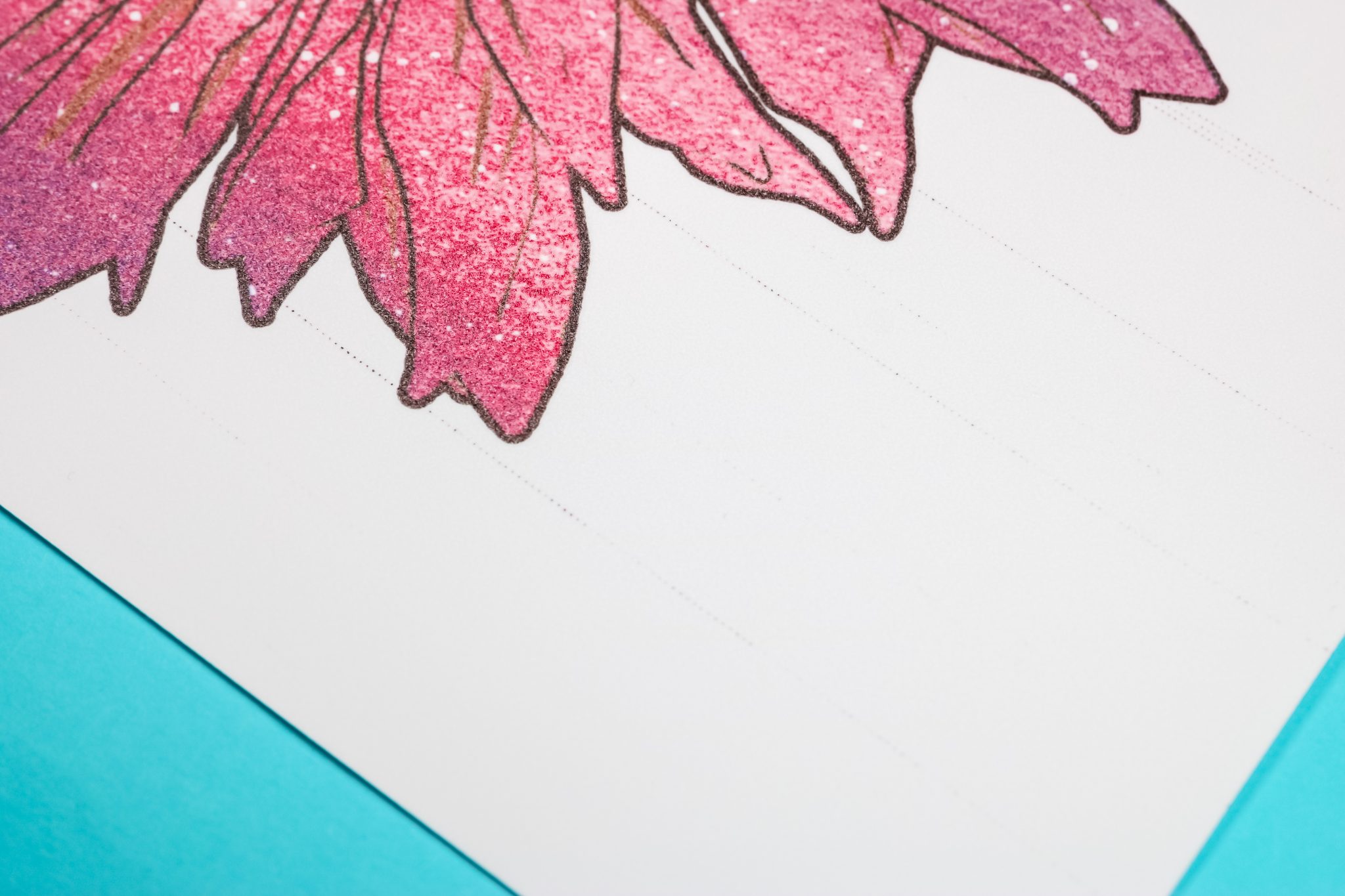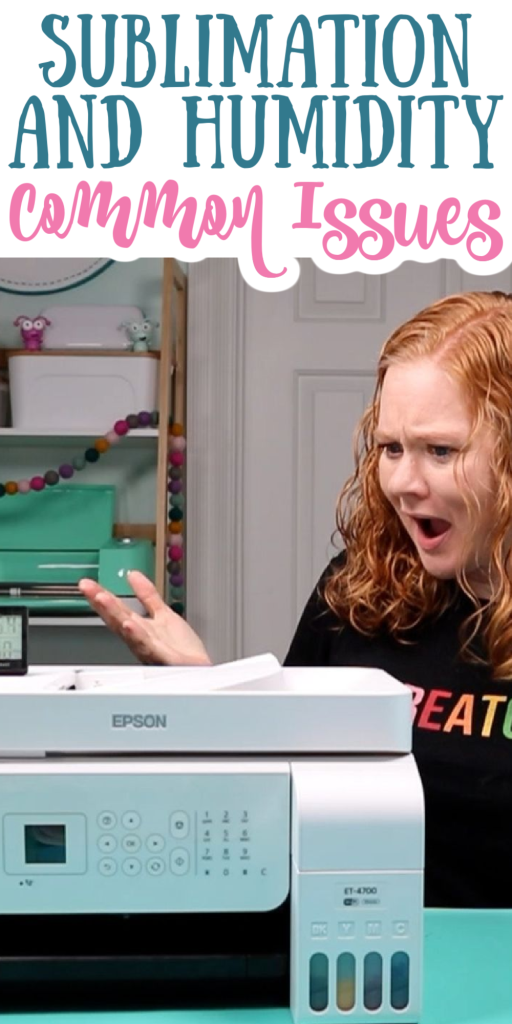Did you know that there are many sublimation issues caused by humidity? Are you having issues with your sublimation prints? Humidity may be the cause! Keep reading to learn the top sublimation issues caused by humidity and how you can prevent them.
If humidity is not your issue, you may try our sublimation troubleshooting guide for more common mistakes and issues!

Can Humidity affect Sublimation?
Did you know humidity has a direct effect on sublimation? It really does If you’re having trouble with your sublimation printer, humidity might be a factor. You can watch me walk through all the steps for checking your humidity and how it can affect your sublimation prints. Just click play on the video below:
Not every sublimation printer issue is caused by humidity but it can definitely play a role. Let’s walk through issues humidity can cause.
How to Check the Humidity in Your Home
The best way to check the humidity in your home is to get an inexpensive humidity gauge. This is the one I use, it’s really inexpensive and shows temperature and humidity.

I keep it in my craft room which is where my sublimation printer is located. That way I know what the humidity is right where the printer is. For sublimation printing, 40-50% humidity is optimal. A little bit dryer, like 30-50% would probably be okay but higher humidity numbers and lower than 30% can cause sublimation problems.
If you see your humidity is between 50 – 60%, you’re likely okay, but be aware that higher than that you can start to have issues.
How to Fix the Humidity in Your Home
During the summer months, humidity raises quite a bit. If you need to adjust the humidity in your home, you can use a humidifier to add humidity or a dehumidifier to remove humidity. Both of these allow you to adjust the humidity in your space.
If your crafting space isn’t blocked off from the rest of the house, you will probably want to adjust the humidity in your entire home. For instance, my craft room is on the second floor so I would correct the entire second floor, not just my craft room.
The humidity reader is really easy to move throughout the house. If you don’t have a humidifier or dehumidifier, you can check the different areas of your house to see if there is a location that has the right humidity.
Where to Store Your Sublimation Printer
If you’re having issues with your sublimation printer, check the humidity of where it is stored. Is it close to a fan, AC vent, or air intake? Those can be drying out the printer. I would set my humidity reader right on top of the printer to see what the humidity is exactly where it sits. You may need to adjust the humidity or move the printer to a better location.
How to Store Sublimation Materials
Where should you store your sublimation materials?
First, you should always store your sublimation paper in the original packaging in the original box. Never store sublimation paper in your printer. Humidity and paper don’t mix at all, any time of the year. Even with the paper in the original packaging, you should store it where the humidity is most optimal.
The same goes for your sublimation blanks. You want all your blanks to be nice and dry. This is why I always talk about pre-pressing your blanks. Anything that may have moisture in it, a pre-press helps remove excess moisture.
New to sublimation? Check out my free sublimation class here.
What Are the Sublimation Issues Caused by Humidity?
There are a variety of sublimation issues caused by humidity. Let’s talk through them.
Sublimation Paper Humidity Issues
First, let’s talk about sublimation printer issues. Sublimation paper that is left in the printer can curl up in humidity. When those edges curl they can hit your print heads.
If you’re seeing black splotches of ink all over your print, like on the sides or corners, or even just randomly on the sheet, those can be caused by humidity. If you’re having that issue, check the paper in your printer and check where you’re storing your paper.

Sublimation Printer Wheel Marks
Next, we have the ever-famous pizza wheel marks. I hear about this problem a lot. With a converted Epson EcoTank printer or even an Epson F170 sublimation printer you may, all of a sudden, start getting pizza wheel marks on your print.
Generally, those are caused by the ink not drying before the wheels run across the paper. This can be caused by humidity. Either humidity in the paper or where the printer is sitting.

Print Head Clogs
You might be surprised to know that humidity issues can cause more print head clogs than usual, even if you’re regularly printing. If you’re having trouble controlling the humidity in your space (your humidity level is just a little higher than recommended and you can’t get it lower), you can counteract that by printing more often.
I always recommend printing every one to two weeks with a sublimation printer, especially if you have a converted Epson EcoTank printer. If I had humidity issues, I would print even more often. Keeping those print heads running can help prevent those clogs.
Humidity Issues with Pressing Sublimation Prints
We’ve talked a lot about the issues you can have with printing your sublimation images but humidity can also affect the pressing of your sublimation print.
If you’re noticing that you’re not getting a consistent image when you’re pressing, maybe you see splotches or faded areas, those can be caused by humidity. The pre-press is very important in removing moisture from your blank. If you’re dealing with higher humidity levels you may need to pre-press more than once.
If you’re sure your blank is nice and dry, you may have too much moisture in your paper. Make sure you’re allowing plenty of time for your print to completely dry. If your humidity is higher than normal, allow that print to dry even longer.
Final Thoughts on Sublimation Issues Caused by Humidity
So now you know, check the humidity in your home. Be sure to keep your blanks, paper, and printer stored in the correct location so they have that optimal temperature and hopefully optimal humidity wherever they’re stored.
Make sure you’re not drying out your printer with a fan or even an air vent. Those of you that are struggling with pizza wheel marks, I see you! Definitely check into getting a gauge to measure the humidity in your home.
Even if you’re not currently having sublimation issues I highly recommend a humidity gauge. They’re a great investment and could potentially help you prevent future sublimation issues caused by humidity!
If you have any questions about sublimation printing in general or sublimation printing and humidity, please ask those in the comment section below.











